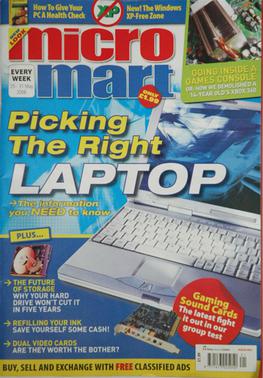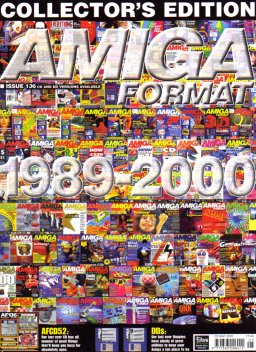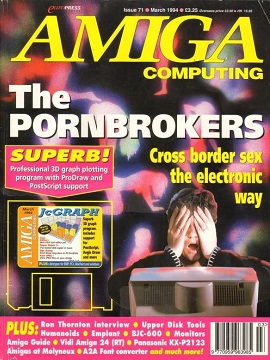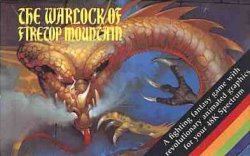Related Research Articles

Amiga is a family of personal computers introduced by Commodore in 1985. The original model is one of a number of mid-1980s computers with 16- or 16/32-bit processors, 256 KB or more of RAM, mouse-based GUIs, and significantly improved graphics and audio compared to previous 8-bit systems. These systems include the Atari ST—released earlier the same year—as well as the Macintosh and Acorn Archimedes. Based on the Motorola 68000 microprocessor, the Amiga differs from its contemporaries through the inclusion of custom hardware to accelerate graphics and sound, including sprites and a blitter, and a pre-emptive multitasking operating system called AmigaOS.

Commodore International was an American home computer and electronics manufacturer founded by Jack Tramiel. Commodore International (CI), along with its subsidiary Commodore Business Machines (CBM), was a significant participant in the development of the home-computer industry in the 1970s, 1980s, and early 1990s. The company developed and marketed the world's best-selling computer, the Commodore 64 (1982), and released its Amiga computer line in July 1985. With quarterly sales ending 1983 of $49 million, Commodore was one of the world's largest personal computer manufacturers.

UAE is a computer emulator which emulates the hardware of Commodore International's Amiga range of computers. Released under the GNU General Public License, UAE is free software.
AmigaOne is a series of computers intended to run AmigaOS 4 developed by Hyperion Entertainment, as a successor to the Amiga series by Commodore International. Earlier models were produced by Eyetech, and were based on the Teron series of PowerPC POP mainboards. In September 2009, Hyperion Entertainment secured an exclusive licence for the AmigaOne name and subsequently new AmigaOne computers were released by A-Eon Technology and Acube Systems.

Hyperion Entertainment CVBA is a Belgian software company which in its early years focused in porting Windows games to Amiga OS, Linux, and Mac OS. In 2001, they accepted a contract by Amiga Incorporated to develop AmigaOS 4 and mainly discontinued their porting business to pursue this development. AmigaOS 4 runs on the AmigaOne systems, Commodore Amiga systems with a Phase5 PowerUP accelerator board, Pegasos II systems and Sam440/Sam460 systems.

Directory Opus is a file manager program, originally written for the Amiga computer system in the early to mid-1990s. Commercial development on the version for the Amiga ceased in 1997. Directory Opus is still being actively developed and sold for the Microsoft Windows operating system by GPSoftware and there are open source releases of Directory Opus 4 and 5 for Amiga.

A-10 Tank Killer is a 1989 combat flight simulation video game for DOS developed and published by Dynamix. An Amiga version was released in 1990. The game features an A-10 Thunderbolt II attack aircraft. Following the success of Red Baron, version 1.5 was released in 1991 which included Gulf War missions and improved graphics and sounds. Several mission packs were sold separately. A sequel published by Sierra, Silent Thunder: A-10 Tank Killer II, was released in 1996.

Micro Mart was a weekly computer magazine published in the United Kingdom by Dennis Publishing Ltd. As of 2015, it had a circulation of 5,422. In a letter to subscribers in December 2016 it was announced that the magazine would cease publication with issue No 1445 : "After 30 amazing years of telling it like it is, Micro Mart magazine is logging off."

Amiga Format was a British computer magazine for Amiga computers, published by Future plc. The magazine lasted 136 issues from 1989 to 2000. The magazine was formed when, in the wake of selling ACE to EMAP, Future split the dual-format title ST/Amiga Format into two separate publications. In 1991, the magazine was selling 135,000 copies a month.
Amiga software is computer software engineered to run on the Amiga personal computer. Amiga software covers many applications, including productivity, digital art, games, commercial, freeware and hobbyist products. The market was active in the late 1980s and early 1990s but then dwindled. Most Amiga products were originally created directly for the Amiga computer, and were not ported from other platforms.
Europress was a British magazine and software publisher based in Adlington, near Macclesfield, Cheshire. Their magazine publishing business was previously known as Database Publications. The software division was renamed in 1999 to Actualize.

Amiga Computing was a monthly computer magazine of a serious nature, published by Europress and IDG in both the UK and USA. A total of 117 issues came out. The games section was called Gamer, although later Amiga Action was incorporated into the magazine and became the games section.

Worms is a 2D artillery tactical video game developed by Team17 and released in 1995. It is the first game in the Worms series of video games. It is a turn based game where a player controls a team of worms against other teams of worms that are controlled by a computer or human opponent. The aim is to use various weapons to kill the worms on the other teams and have the last surviving worm(s).

Fun School is a series of educational packages developed and published in the United Kingdom by Europress Software, initially as Database Educational Software. The original Fun School titles were sold mostly by mail order via off-the-page adverts in the magazines owned by Database Publications. A decision was made to create a new set of programs, call the range Fun School 2, and package them more professionally so they could be sold in computer stores around the UK. Every game comes as a set of three versions, each version set to cater for a specific age range.
Atlantis Software was a London-based UK computer games publisher that released a number of games during the 1980s and early 1990s.

The Warlock of Firetop Mountain is an action game published by Crystal Computing in 1984 for the ZX Spectrum home computer. It is loosely based on the adventure gamebook of the same name written by Steve Jackson and Ian Livingstone, and published by Puffin Books in 1982.

The Amiga CD32 (stylized as Amiga CD32, code-named "Spellbound") is a 32-bit home video game console developed by Commodore and released in Europe, Australia, Canada, and Brazil. It was first announced at the Science Museum in London on July 16, 1993, and was released in September of the same year.
Warp3D was a project, founded by Haage & Partner in 1998, that aimed to provide a standard API which would enable programmers to access, and therefore use, 3D hardware on the Amiga.

Byte was a microcomputer magazine, influential in the late 1970s and throughout the 1980s because of its wide-ranging editorial coverage.
References
- 1 2 3 "Crystal Software International Announces New Amiga Magazine". Amiga Web Directory. Retrieved 4 October 2015.
- ↑ "Amiga Survivor sold to CS&E". Amiga News. 19 April 2000. Retrieved 15 January 2017.
- ↑ "Amiga Survivor Magazine Announces New Issue". Amiga Web Directory. 1999. Retrieved 12 January 2016.
- ↑ "Commercial Amiga Magazines". Amiga History Guide. Archived from the original on 30 November 2019. Retrieved 15 January 2017.